Over a decade ago now, runners became obsessed with a “new” trend of running barefoot, which lead to a huge spike in Achilles, calf, knee and foot injuries. Whoops. Luckily we now have a happy medium with zero drop running shoes.
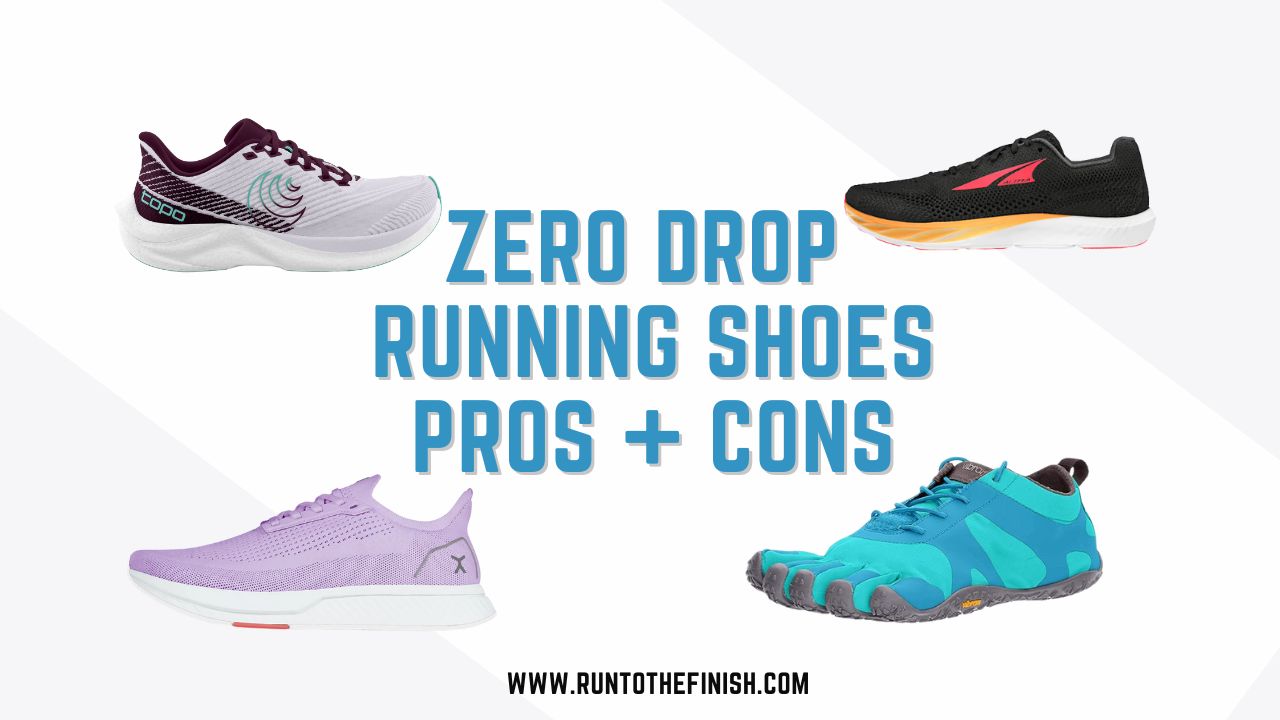
One of the first to hit the market was Altra running shoes. started when founder Golden Harper ran a 3:08 marathon at age 10.
Yup, you read that correctly!
It should come as no surprise that a boy who runs that fast was raised in a family that owned a running shoe store.
Or that they would tinker with shoes at home in the toaster oven…hmm sound familiar, remember that whole waffle iron story and Nike?? It seems all shoes start in someone’s kitchen.
Golden found he didn’t love the skin to pavement feeling and that there was some benefit to still having cushion underfoot, which lead to a new running shoe type that has exploded.
What is a Zero Drop Running Shoe?
Before you can understand what zero-drop running shoes are, you need to know what a heel-to-toe drop is.
Typically, regular running shoes offer more cushioning in the heel and less in the forefoot. This means that the heel is higher than the front of the foot. When you wear the shoe, your foot will sit at a slight downward angle.
And so, drop refers to the distance a shoe slopes from the heel to the toebox.
The best visual is a high heel where it’s very easy to see to see that slope. In most running shoes, we’re talking about millimeters, so it’s not always hugely visible.

The height difference between the forefoot and the heel is known as the heel-to-toe drop. Take a shoe with a heel height of 30 mm and a forefoot height of 20 mm, so the drop is 10 mm.
There is no height difference between the heel and the forefoot in zero-drop running shoes. The heel and forefoot are the same height, regardless of how much cushioning is in the midsole.
Example heel-to-toe-drop on different categories of shoes:
- Average running shoes used to be 12mm (Asics Gel Nimbus)
- Now more neutral cushioned shoes are closer to 8-10mm (Brooks Ghost)
- Lower drop lighter 6mm-4mm (Saucony Kinvara)
- Zero drop shoes remain even from heel to toe (Altra vs Topo)
- Minimalistic shoes like Vibram are different than zero drop shoes because they have no cushion
Still confused? Don’t worry, we have this article to help you understand all the different types of running shoes.
What is the Best Zero Drop Running Shoe?
This is always a subjective topic, but as always I’m going to wade in to the deep in to give you as much information as possible to make your selection!
Vibram Five Fingers
The Original shoe for running with as much of your foot contacting the ground as possible. Just a thin durable layer of rubber protects your foot.
They truly mimic the feeling of running barefoot by providing a snug fit that allows your feet to move and flex naturally. This experience can help improve your balance and agility, as well as strengthen the muscles in your feet and lower legs.
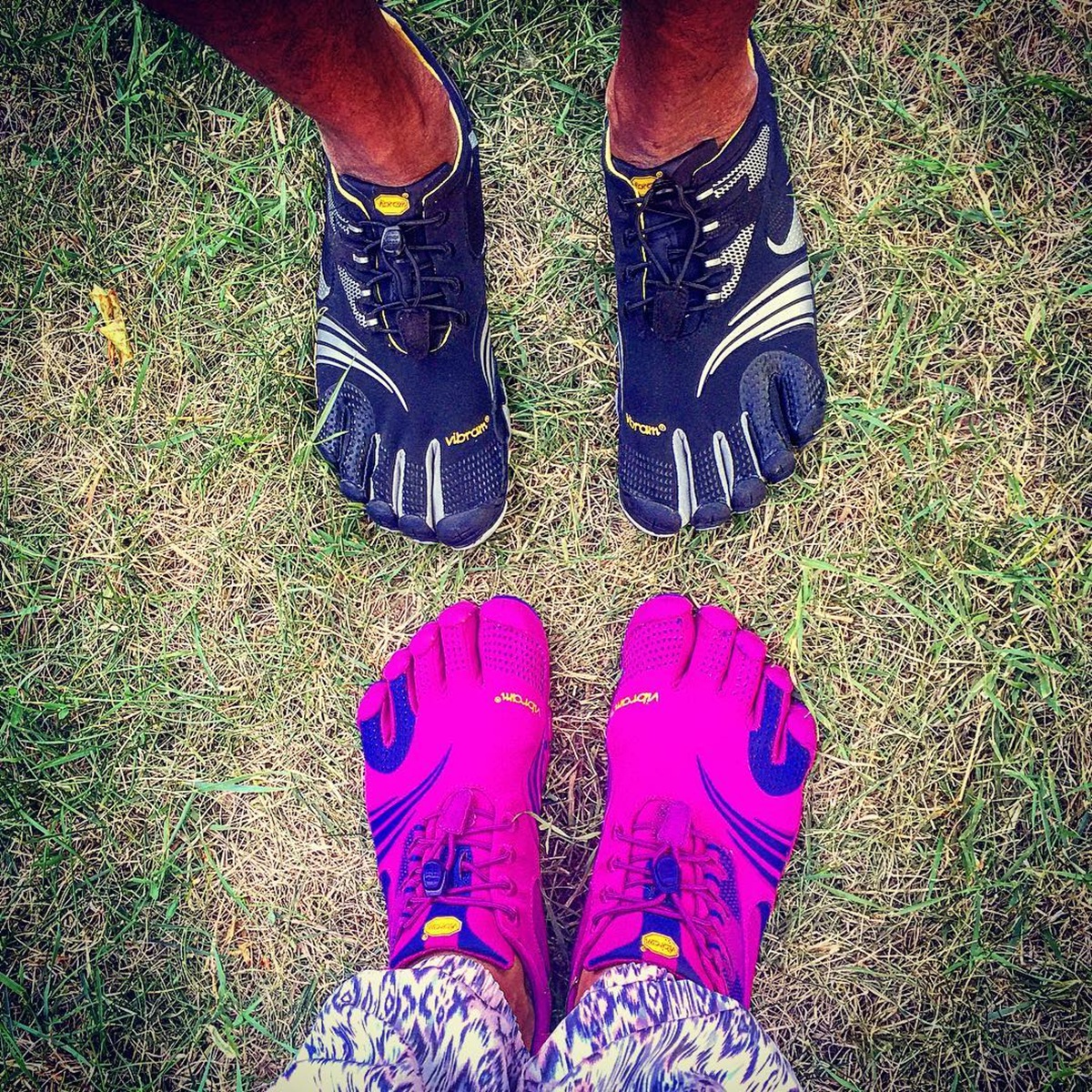
The thin, flexible sole of Vibram Five Fingers allows for improved proprioception, or the ability to sense the position and movement of your body. This can help you adjust your gait and foot strike to reduce the risk of injury and improve your overall running form.
Vibram Five Fingers can be used for a variety of activities beyond running, including hiking, yoga, and water sports. This versatility has made them a popular choice for outdoor enthusiasts and athletes.
I do know folks who have run marathons in them….not me. I don’t even want to run a mile in them.
Altra Running Shoes
Altra is the only running footwear company to feature the cushioned Zero Drop™ platform and FootShape™ toe box technologies. This means that their shoes feature zero drop and the toe box is designed with the natural shape of the foot in mind.
They are basically designed with a wider toe box and a more natural foot shape, allowing your toes to splay and move naturally. This can improve stability and reduce the risk of blisters and other foot injuries.

Altra shoes also provide balanced cushioning, which means that the heel and forefoot are the same distance from the ground. This encourages a more natural foot strike and can reduce impact on your joints.
These have evolved a great deal and now offer a great range of cushion and even some with a small heel drop.
Check out my Altra running shoes review to learn more about the ones I recommend and why.
Topo Athletic Running Shoes
Topo Athletic makes some great natural running shoes with a focus on a low heel to toe drop (0 to 5mm) to encourage natural loading and foot motion during the gait cycle while running. All the shoes also feature a roomy toe box meant to allow the toes to splay to allow for natural foot function.
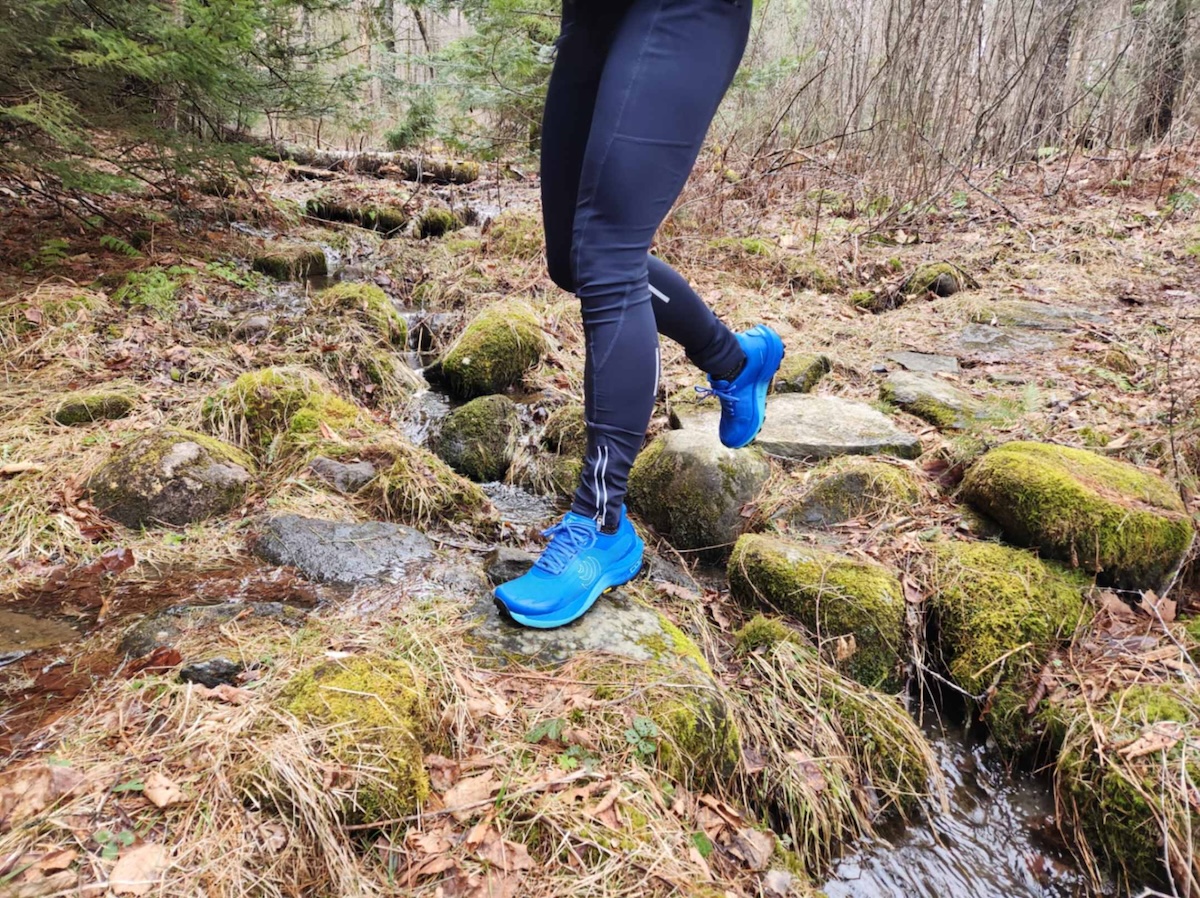
If you’re looking for some trail shoes and hiking boots with light cushioning, Topo Athletic has a good selection that I recommend you check out.
Check out some of our testers’ recent Topo reviews:
Flux Running Shoes
Flux is a newer company that is starting to make waves across the running and fitness community. Their goal is to create shoes that move with your feet and not against them.
Similar to Altra, Flux trainers have that wider, more natural toebox-shaped design.
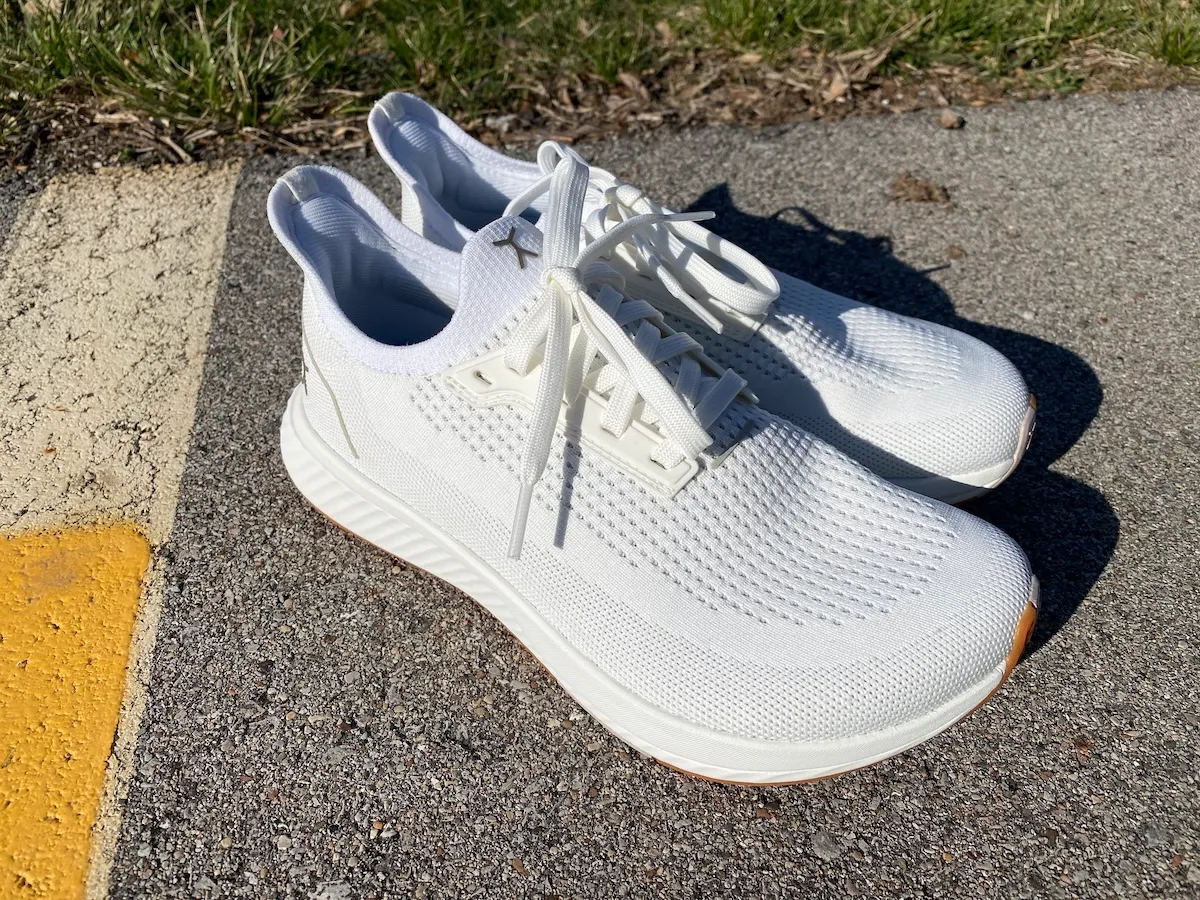
If you’re looking for a zero drop shoe to use road, trails, or in the gym, there’s going to be an option for you. We’re excited to see how this brand keeps evolving. Right now, there aren’t too many models for each category, but we know that as the word gets out it’s going to be a must have!
Check out our review of the Flux Adapt Runner here >>
Vivo Barefoot Running Shoes
While our team hasn’t tried these yet, they’re gaining popularity amongst runners, especially those looking to get more of that ground feel underfoot.
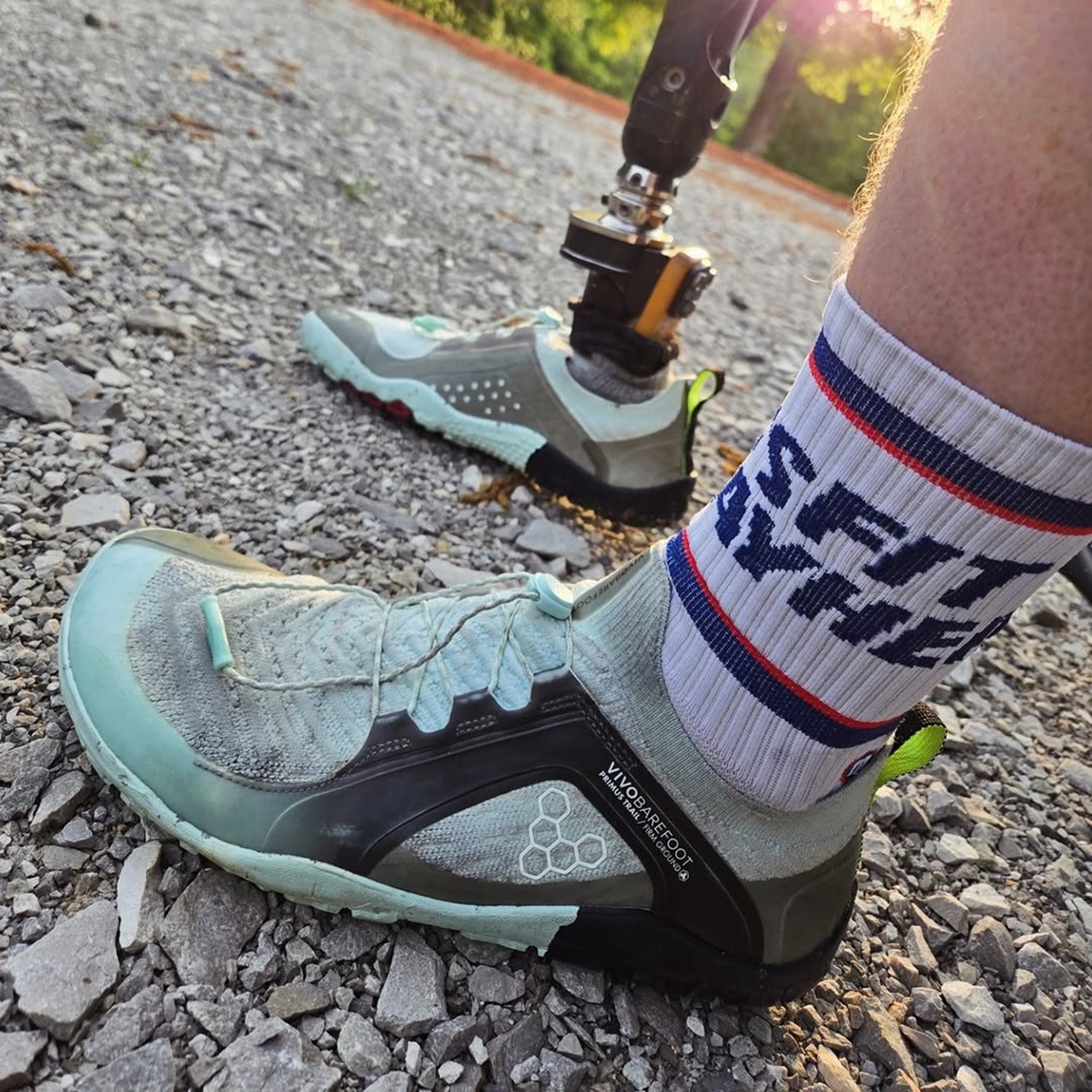
Vivo shoes are designed so that your foot moves naturally whether you’re running or working out in the gym. There’s enough room in the toebox so that your toes can naturally spread out and move around with each step.
You can also take ones of these shoes and curl them up into a ball, that’s how soft and flexible they are!
Plenty of options for women, men and even kids! If you try them out, let us know!
Running Sandals
If you really want to get back to your running roots, take it to a sandal. Oh yes, that’s right a leather-bottomed thong.

Running in these make me a little nervous about scraping the tops of my toes. But we’ve for sure seen these used in races from the 5k all the way to an ultra. To each their own I guess!
Benefits of Zero Drop Shoes
The primary benefit of zero-drop shoes is that they maintain a natural foot position.
The concept is that if the foot is kept in its natural, neutral position, then the body will rely less on the shoe and more on the foot to carry out the necessary movement activities.
Traditional running shoes have a raised heel, which places the body in an unnatural stance. Advocates of zero-drop shoes argue that this unnatural posture is the cause of many running injuries that are experienced by runners today.
- You already land under your body with a midfoot strike (or you’re willing to work on this piece of your running form)
- They allow you to feel more connected to the ground. This feedback can enhance stability and helps many increase power in their stride
- Increased activation of muscles for less reliance on the shoe to correct your weaknesses
- Less cushion foam means the shoes actually last closer to 1,000 miles instead of the standard 500
- Less cushion often means a lighter shoe (though many now have quite a bit of cushion)
- Lower heel to toe drop can help improve things like IT Band Syndrome
Are Zero Drop Shoes Good for Plantar Fasciitis?
While I don’t like barefoot or minimal shoes for Plantar Fasciitis, Zero Drop shoes with the right cushion and arch support can be a good choice. This is going to come down to personal preference and what feels good for your foot.
You’ll still need to do all of the foot stretches and truly make sure you transition the right way to avoid additional calf tightness pulling on the feet.
But if you transition slowly and continue with the stretching, then they can be a good option.
How to Transition to Zero Drop Running Shoes?
While the transition is not as intense as for barefoot or carbon fiber shoes, there’s still a smart process to follow to avoid risk of injury. The prevalence of overuse injuries when barefoot and zero drop first came out was through the roof.
Don’t be one of those runners!
With the shorter heel height, your Achilles will actually stretch farther and your muscles will need to adjust. Many runners find their calves are suddenly working a great deal harder.
- Start with a shoe that has a smaller heel drop than your current shoe before jumping to zero
- Alternate the new shoe with your original running shoes for while on shorter runs
- Once you can comfortably do most of your miles in the lower shoe, add a zero drop to the rotation
- Again alternate the low drop and zero drop for a few months
Ideally, you want to make this a slow footwear transition over a number of months allowing your muscles to slowly adjust and build up to the new effort required.
Think about going for a run on the beach and how sore you might be the next day from all kinds of tiny muscles or big muscles being worked by the different terrain.
If you jump to the new shoe with no transition those muscles become overworked which leads to strains or changes to your gain that cause other injuries.
Are Zero Drop Shoes the Same as Minimalist Shoes?
No. Although the phrases are often used interchangeably, zero-drop and minimalist shoes are different.
A minimalist running shoe is designed to mimic the experience of running barefoot, but is NOT a barefoot shoe. This means that they usually have less cushioning, but the heel-to-toe drop can still be up to 8 mm. Shoes classified as minimalist typically do not feature heel drops any higher than that.
If there isn’t much cushioning, zero-drop running shoes could be considered minimalist. However, it is still possible to find maximalist running shoes with a zero drop that are ultra-cushioned, like the Altra Olympus.
In short, zero-drop shoes refer primarily to the difference between the cushioning in the heel and forefoot, whereas minimalist shoes are more about the amount of cushioning.
Are Zero Drop Shoes Better?
It’s reported that a thicker heel will naturally hit the ground first when you stride, thus turning you in to a heel striker whether you meant to or not. This is the big marketing discussion around most zero drop shoes.
But, let’s remember that being a heel-striking isn’t necessarily a bad thing unless you are overstriding.
So when they look at your foot on the treadmill at the running store, don’t let that one piece of information make you think you need a radically different shoe.
Switching to a zero drop or minimalist shoe will not automatically stop you from heel striking or overstriding!
It will lead to injuries if you are overstriding regardless of the shoe, but even more quickly with these shoes.
However, there are benefits for some runners who transition to a shoe like Altra Zero Drop.
Hopefully, this gives you a place to start with understanding this style of shoe and if it’s even right for you!
Looking for more running shoe reviews and training tips?
- 10 Best Low Drop Running Shoes
- Best Running Shoes for Plantar Fasciitis
- 7 Barefoot Running Benefits (From a Skeptical Coach)
Other ways to connect with Amanda
Instagram Daily Fun: RunToTheFinish
Facebook Community Chatter: RunToTheFinish
Get more running tips: Pinterest



 17 Running Games for Kids: How to Get Kids Running for Fun
17 Running Games for Kids: How to Get Kids Running for Fun
Thoughtful review and I appreciate also how there is a shoe out there for everyone . . we all have different needs!